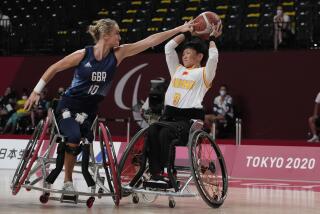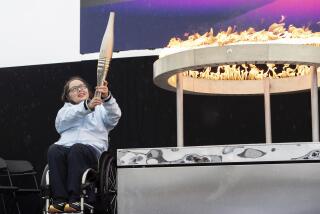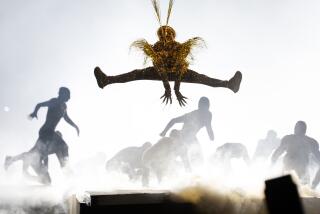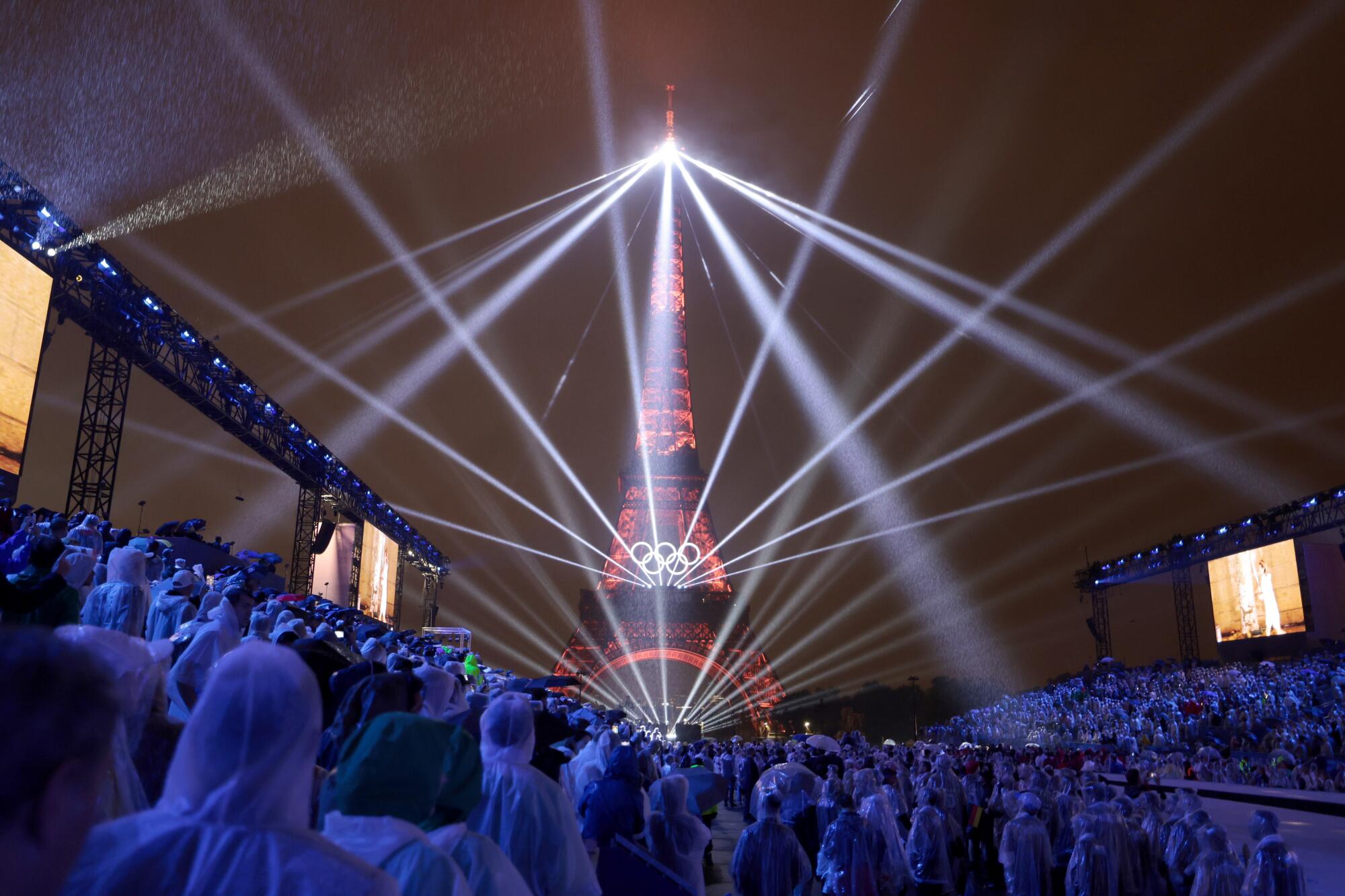
PARIS — All around the city there was talk of bad weather and nervous glances toward a dour, gray sky.
Sure enough, the clouds let loose in torrents of rain late Friday afternoon, dousing the streets, threatening to spoil France’s big moment.
Then the show began.
A convoy of boats cruised down the Seine, one after another, carrying thousands of athletes. Lady Gaga danced across a glittering stage and Celine Dion sang from a perch in the Eiffel Tower. The Olympic torch levitated like a giant hot-air balloon.
It seemed that nothing — not even a drenching summer storm — could stop the Paris Olympics from staging one of the most spectacular opening ceremonies ever.
“Through this ceremony, our country will show the world what it is,” President Emmanuel Macron said earlier. “Let the party begin!”
In recent weeks, there was a sense that France needed something like this, a reason to celebrate after a tough stretch that included protests and worker unrest, political upheaval, even a series of arson fires that disabled the railway system earlier Friday.
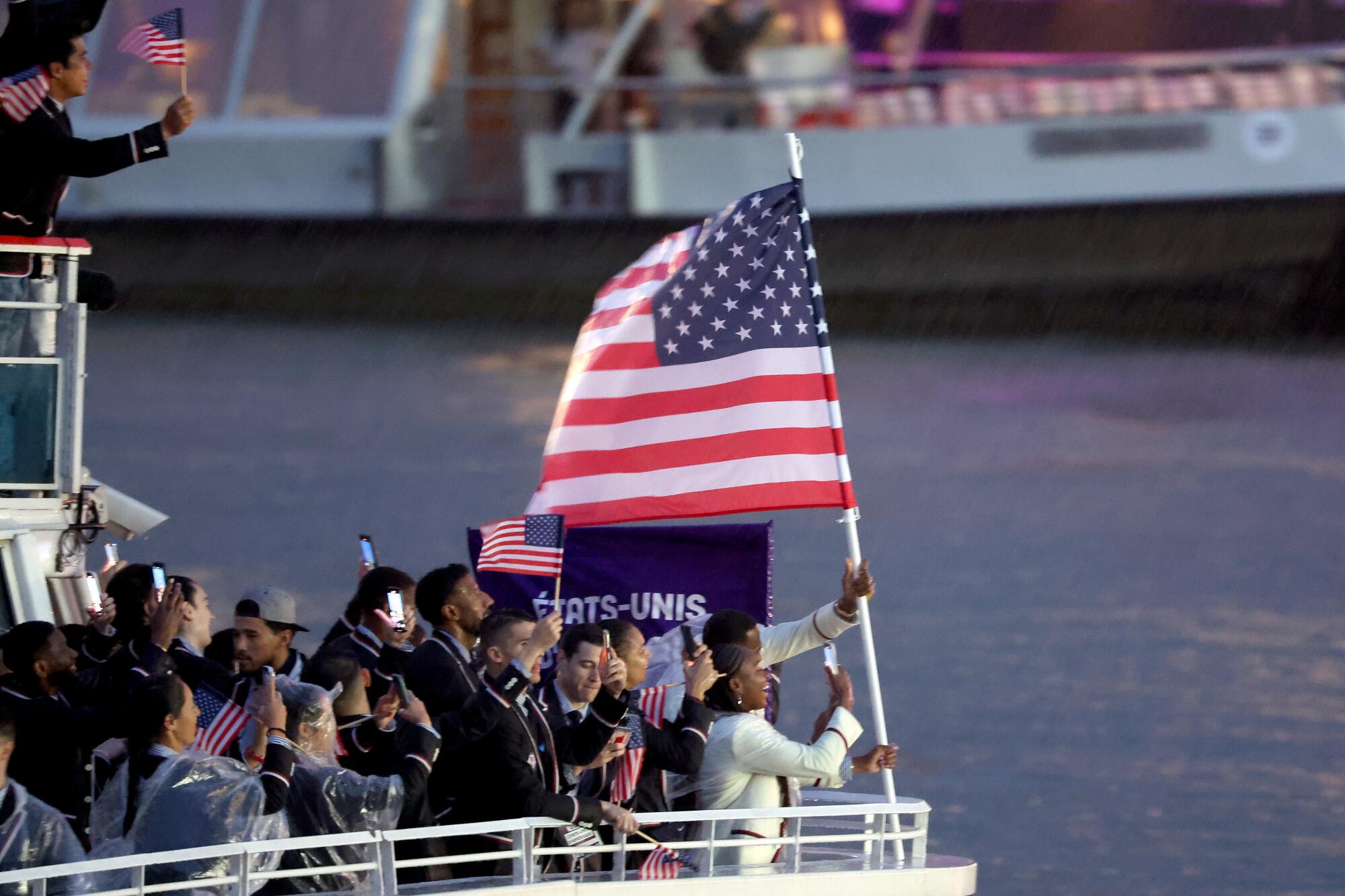
Olympic organizers had rolled the dice when they eschewed a traditional stadium show for a four-mile parade down the Seine with an estimated 320,000 spectators watching from the riverbanks. This departure from convention fit with their effort to transform Paris into a vast playing field, staging sports at landmarks such as the Chateau de Versailles and Grand Palais.
“There is no example to follow and there is a space to be free creatively,” artistic director Thomas Jolly told the Olympic news service this week. “So that has been amazing.”
Jolly created a quintessentially French affair, dizzying in scope and artistry, occasionally oddball. It began at the Austerlitz bridge with that flotilla bearing 6,800 athletes from 205 countries. Big teams crowded onto ferries, small teams on small boats.
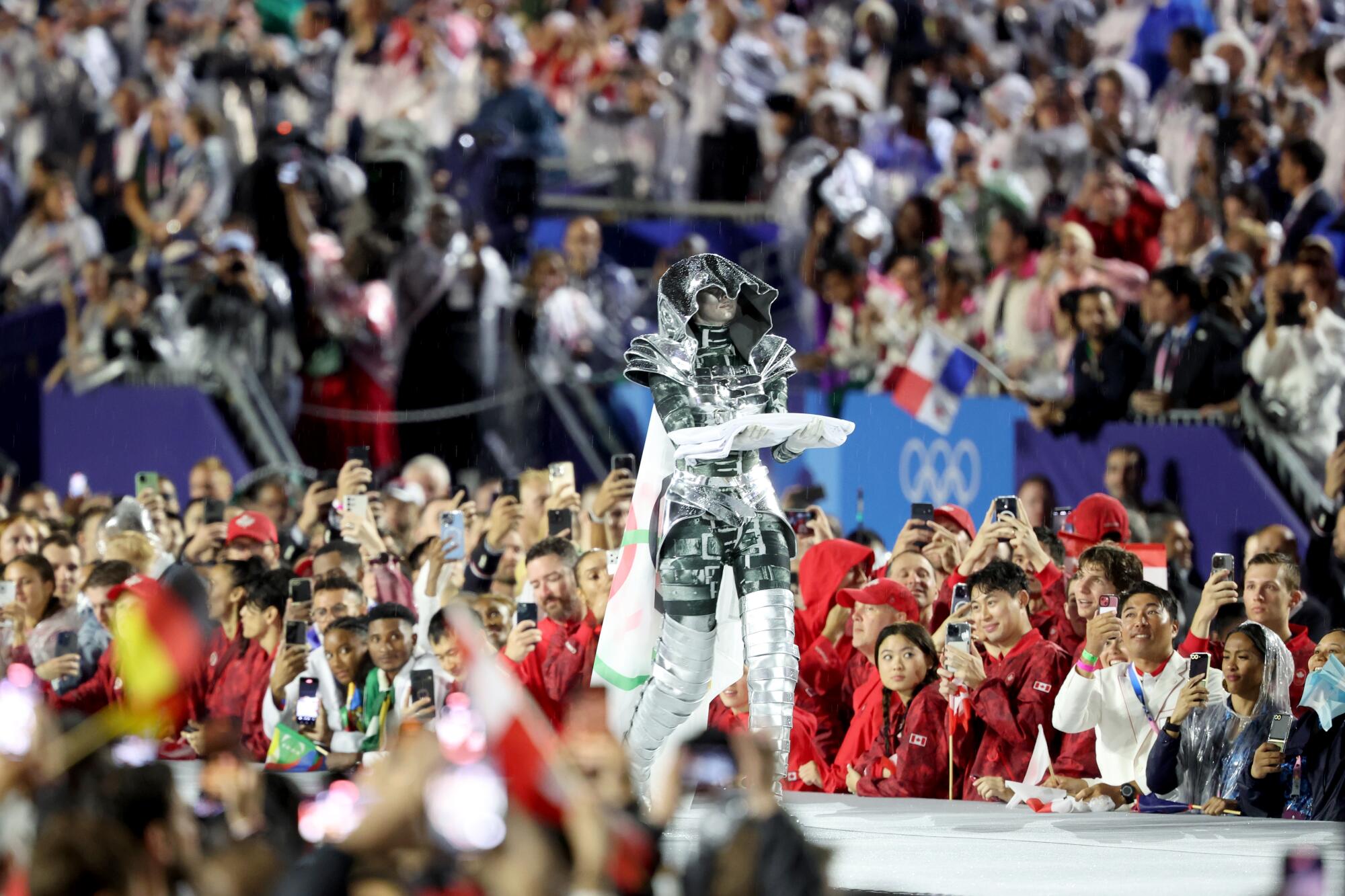
One of the most anticipated moments came early when Lady Gaga sang in French from a golden stage. She was followed by cabaret dancers, all in pink, kicking at the water’s edge.
The country’s recent turmoil had included not only protesters taking to the streets over the Israel-Hamas and Ukraine wars but also activists threatening to defecate en masse in the Seine. Last month, Macron’s decision to call snap elections had left the parliament in disarray.
Shortly after those arson attacks caused delays for thousands of railway travelers, Paris Mayor Anne Hidalgo issued a statement saying she hoped the Games could be “a communal celebration” and “an unforgettable moment of public festivity.”
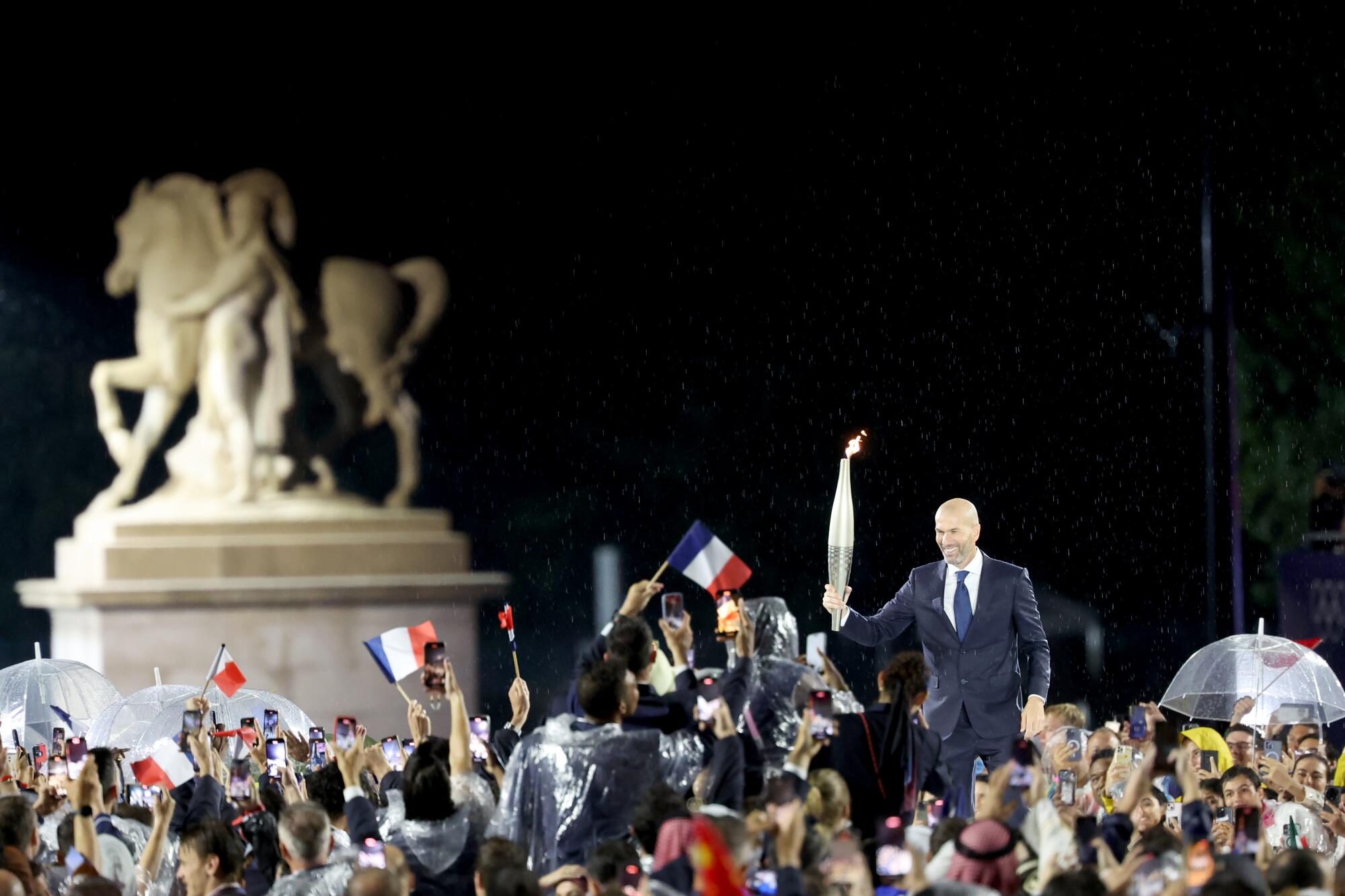
Organizers were deliberate about including cultural references to Les Miserables, fashion icon Yves Saint Laurent and the Louvre. Notre Dame made a cameo appearance.
Ravaged by a 2019 fire, the cathedral was supposed to already have reopened. Instead, performers swung across its construction scaffolding.
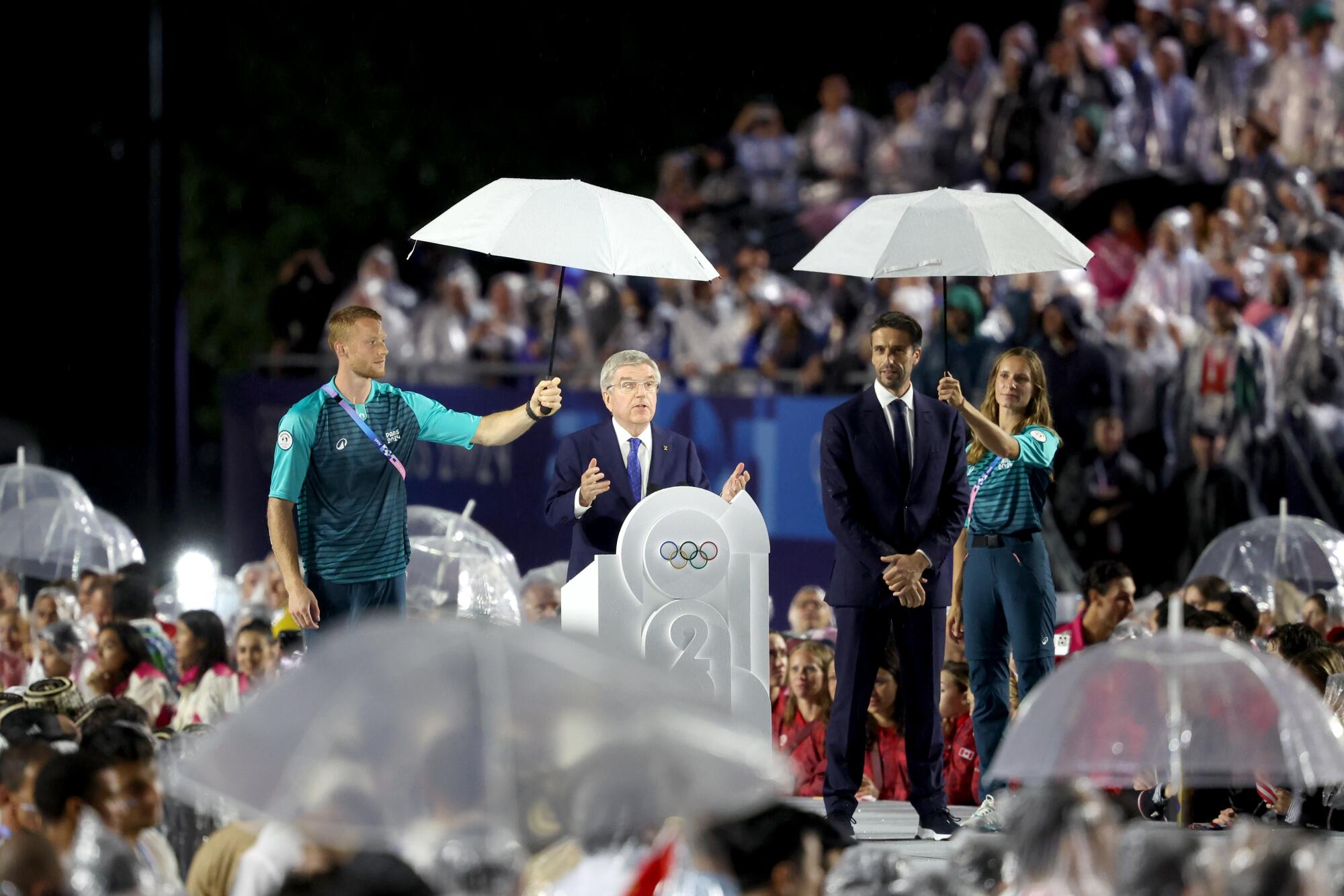
Given the ceremony’s broad footprint, giant video boards were erected at various points so spectators could follow the action. Even as the rain intensified, throngs of people remained along the river.
The pace slowed for a while when the parade reached its terminus outside the historic Trocadero. International Olympic Committee president Thomas Bach gave his customary speech and athletes read the Olympic oath.
But there was no way a night like this could end with mere formalities.
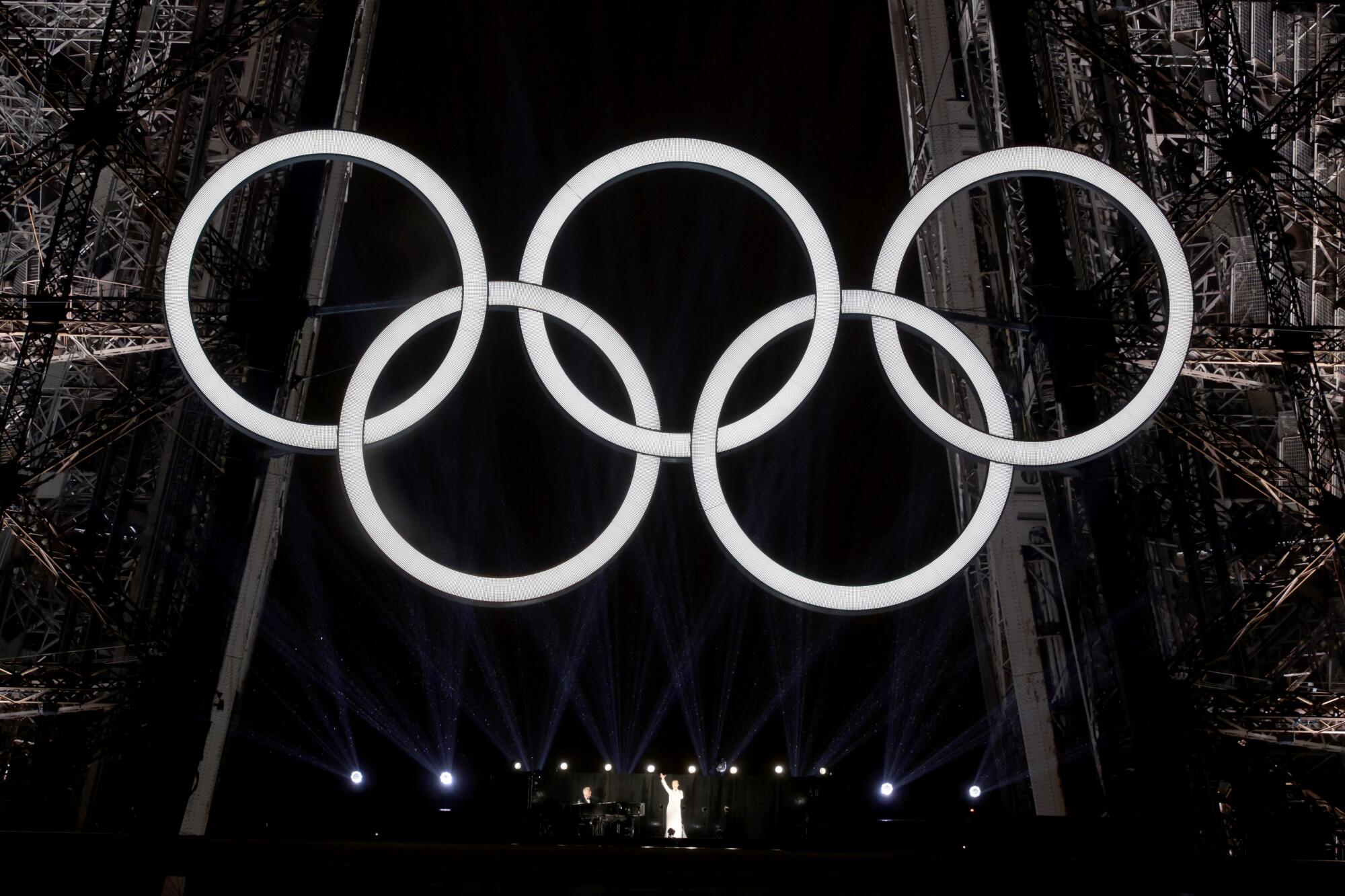
Soon music pumped from loudspeakers as beams of light crisscrossed the Eiffel Tower. Dion, who has been battling illness, gave an emotional performance. Carl Lewis, Nadia Comaneci, Serena Williams and Rafael Nadal helped deliver the torch for its gravity-defying act.
As Bach noted, Paris had welcomed the Games in “such a spectacular way.” The city was ready to have a good time.
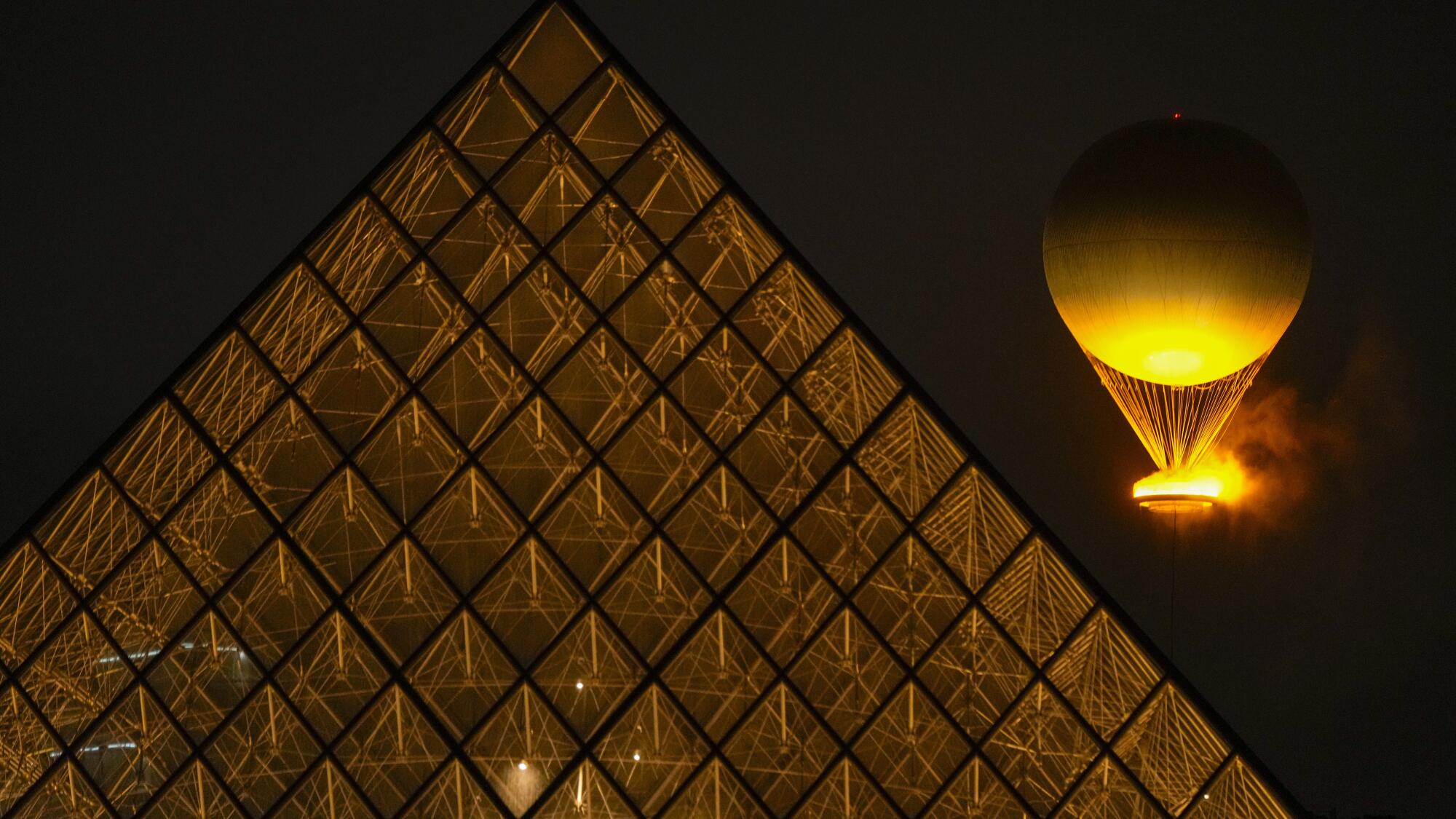
More to Read
Go beyond the scoreboard
Get the latest on L.A.'s teams in the daily Sports Report newsletter.
You may occasionally receive promotional content from the Los Angeles Times.

